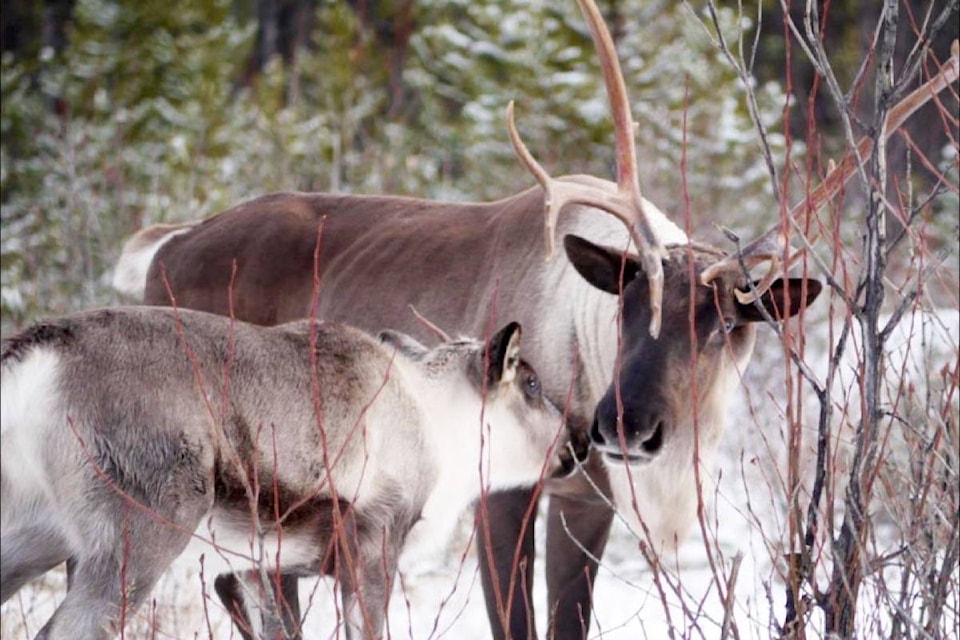As part of the effort to protect Woodland Caribou in the Tweedsmuir-Entiako, Itcha Ilgachuz and Hart Ranges herds, up to 100 will be collared and monitored within the three herds.
This is being done, the ministry of forests told Black Press Media, to assist with determining adult survival, cause of mortality, calf recruitment, population size and response to management actions.
A census completed in June 2020 estimated there were 508 caribou in the Itcha Ilgachuz herd, which is the first time numbers have increased following 17 years of continuous decline, a spokesperson for the ministry said.
In a previous interview about the wolf cull planned for January 2020, the ministry confirmed there were approximately only 385 caribou in the Itcha Ilgachuz herd in 2020 down from 2,800 in 2003.
Read more: Critically low caribou population prompts wolf cull in the Chilcotin
There were an estimated 160 caribou in the Tweedsmuir-Entiako herd in 2019 and an estimated 408 caribou in the Hart Ranges herd in 2020.
When asked about the impact of the province’s wolf culls to support all three herds, the ministry responded the program is in its second year and the results are not available yet.
In the meantime, the province is focusing on other factors including options for habitat protection and management, which once refined, will be brought back for further stakeholder engagement.
A number of projects are underway or planned across B.C.
Projects specific to the Interior region include a partnership with the University of British Columbia, where more than 100 trail cameras will be deployed to provide insight into predator and prey dynamics in the Itcha Ilgachuz herd, while (neonate) calf survival surveys will be done in all three herds.
Terrestrial lichen seeding trials for the Tweedsmuir-Entiako herd will determine the effectiveness of the tool, while in partnership with the University of Northern B.C., evaluation of stand level forest dynamics on caribou winter range.
Data analysis of caribou and wolf GPS collar data will help model caribou and wolf habitat use in relation to landscape disturbance such as fire, timber harvesting, roads and mountain pine beetle kill to inform herd recovery planning.
Modelling work is also occurring to inform and assess moose response to wolf reduction under different landscape conditions in the Tweedsmuir – Entiako and Hart Ranges herds.
While bears, both grizzly and black, are often found scavenging on caribou mortalities caused by other factors, one caribou adult killed by a bear was confirmed in the Tweedsmuir-Entiako herd in 2020 during a mortality investigation of a collared caribou, the ministry confirmed.
“A more significant concern is bear-caused mortality of calves,” the ministry spokesperson added, noting this extent is not well known as calves are rarely collared. “We believe that this cause of mortality is a baseline factor that has not changed significantly due to habitat change. Regardless, any reductions of calf mortality due to bears would benefit caribou recovery.”
Read more: B.C. Government culls 94 wolves in West Chilcotin caribou habitat
news@wltribune.com
Like us on Facebook and follow us on Twitter
